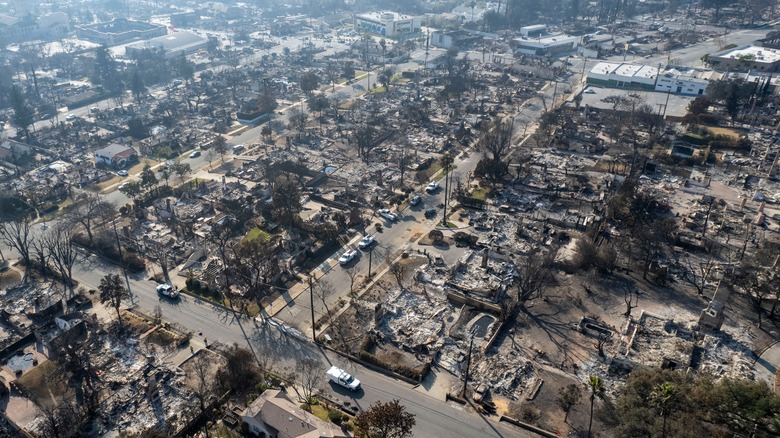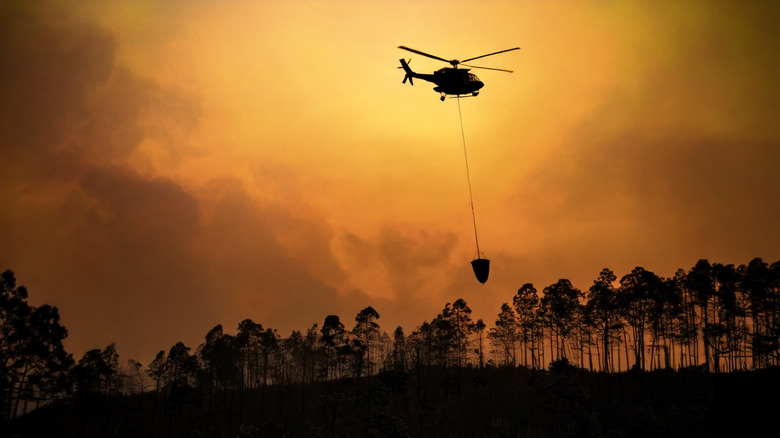Should Tourists Avoid California During El Niño And La Niña?
Every now and then, the terms "El Niño" and "La Niña" come up in weather-related news ("The Boy" and "The Girl" in Spanish), complete with warnings to remain cautious and reminders of what they actually are. In short, El Niño and La Niña are global weather systems that happen about every two to seven years and last around nine to 12 months each. In California, an El Niño system means wetter weather in the southern part of the state, and a La Niña system means wetter in the North, plus drier in the south. This means wildfires in the south and potentially "extreme" weather all around, as NBC Bay Area puts it.
At this point, we're all acquainted with the dangers of wildfires in California. January 2025 saw wildfires sweep through Los Angeles County and cause up to $53.8 billion in property damage. 2020, meanwhile — the most destructive wildfire year on record — saw wildfires tear through more than 4.3 million Californian acres north of San Francisco. Extreme weather conditions are a bit more vague, but generally center on flood risks.
As far as 2025 is concerned, the National Oceanic and Atmospheric Administration's (NOAA) Climate Prediction Center estimates that there's a 71% chance of a La Niña occurring from October to December. Those wanting to exercise extreme caution can simply avoid California altogether for fear of wildfires in the south and floods in the north. A more balanced route involves keeping an eye on weather conditions over time and making judgments about travel plans accordingly.
Watch out for wildfires in the south and floods in the north
While weather systems contain inherently unpredictable elements, modern weather-monitoring technology can give us a head start on events — even where El Niño and La Niña weather systems are concerned. Per our common sense advice, the best thing to do is watch the weather, keep an eye on things, and stay alert. Don't hike to the top of Mount Caroline Livermore in the historical Angel Island State Park north of San Francisco if there's a stormy weather system coming in. Don't hike into Black Star Canyon in the Santa Ana Mountains if things have been drier than not. At the very least, Pacific hurricanes are rarer during La Niña and more common towards the Atlantic coast, making hurricane season in Florida more dicey. That's one less thing to worry about during La Niña in California.
However, conditions are in place to potentially make this year's La Niña more dangerous than usual on the wildfire front. A lack of rainfall in Southern California directly contributed to the January 2025 fires that we mentioned earlier. Plus, December, January, and February are California's typical rainy months, and December overlaps with the potentially impending La Niña from October to December. This means that conditions in Southern California are drier than usual, even before La Niña hits. The system dries things out more and hits right at the time that SoCal typically expects water. This combination of factors might warrant some additional caution if you're traveling to Southern California for the holidays, for business, or for fun. Watch the weather and take care.

